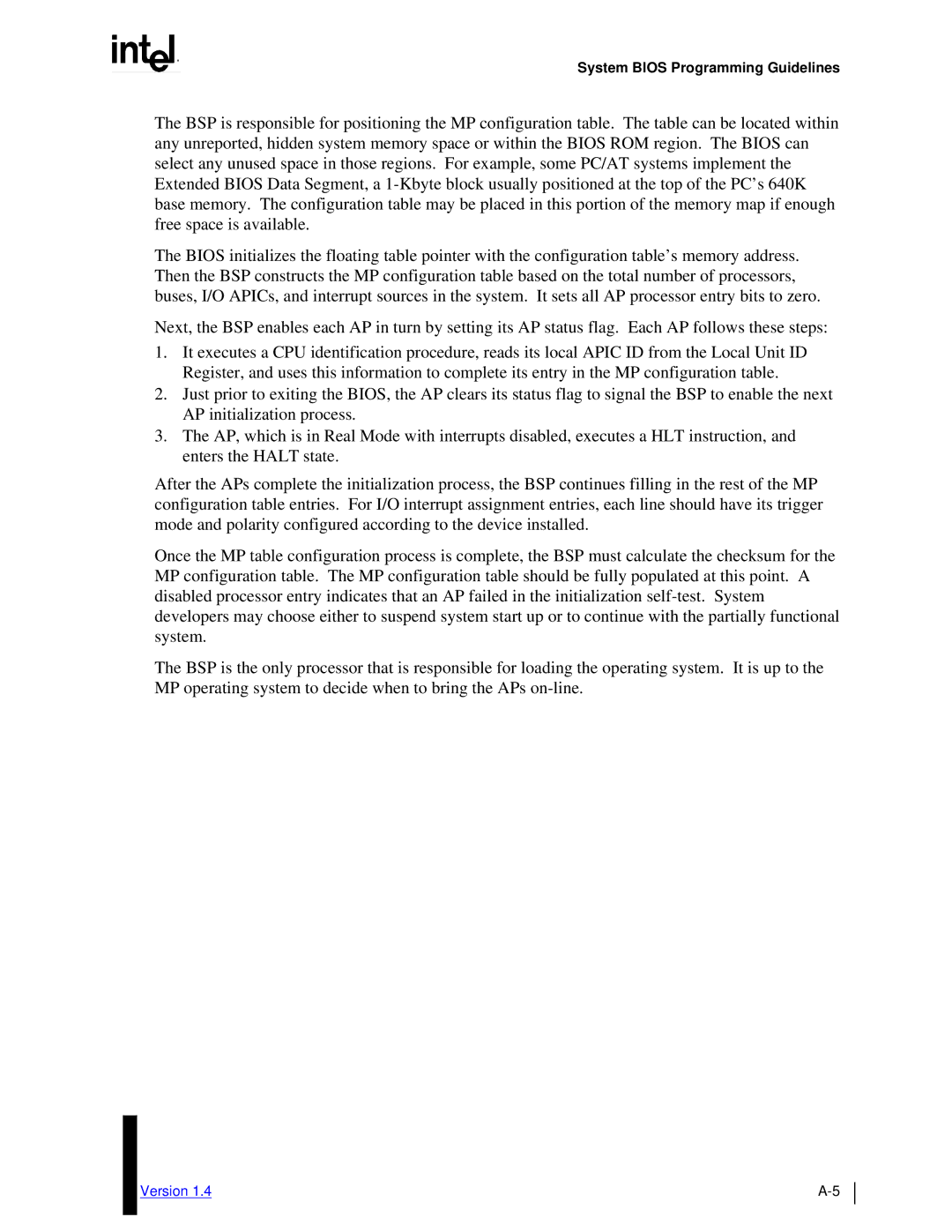
System BIOS Programming Guidelines
The BSP is responsible for positioning the MP configuration table. The table can be located within any unreported, hidden system memory space or within the BIOS ROM region. The BIOS can select any unused space in those regions. For example, some PC/AT systems implement the Extended BIOS Data Segment, a
The BIOS initializes the floating table pointer with the configuration table’s memory address. Then the BSP constructs the MP configuration table based on the total number of processors, buses, I/O APICs, and interrupt sources in the system. It sets all AP processor entry bits to zero.
Next, the BSP enables each AP in turn by setting its AP status flag. Each AP follows these steps:
1.It executes a CPU identification procedure, reads its local APIC ID from the Local Unit ID Register, and uses this information to complete its entry in the MP configuration table.
2.Just prior to exiting the BIOS, the AP clears its status flag to signal the BSP to enable the next AP initialization process.
3.The AP, which is in Real Mode with interrupts disabled, executes a HLT instruction, and enters the HALT state.
After the APs complete the initialization process, the BSP continues filling in the rest of the MP configuration table entries. For I/O interrupt assignment entries, each line should have its trigger mode and polarity configured according to the device installed.
Once the MP table configuration process is complete, the BSP must calculate the checksum for the MP configuration table. The MP configuration table should be fully populated at this point. A disabled processor entry indicates that an AP failed in the initialization
The BSP is the only processor that is responsible for loading the operating system. It is up to the MP operating system to decide when to bring the APs
Version 1.4 |
